SparkPost
Prerequisites
Please ensure that the following settings are in place before you integrate your SparkPost account with WebEngage:
1. From Email/Domain Verification
Please verify all the Sender IDs you'll be using for Email marketing in your SparkPost dashboard before proceeding.
2. Creating a New API Key for WebEngage
Step 1: As shown below, navigate to the section, API Keys in your SparkPost dashboard and click Create API Key.
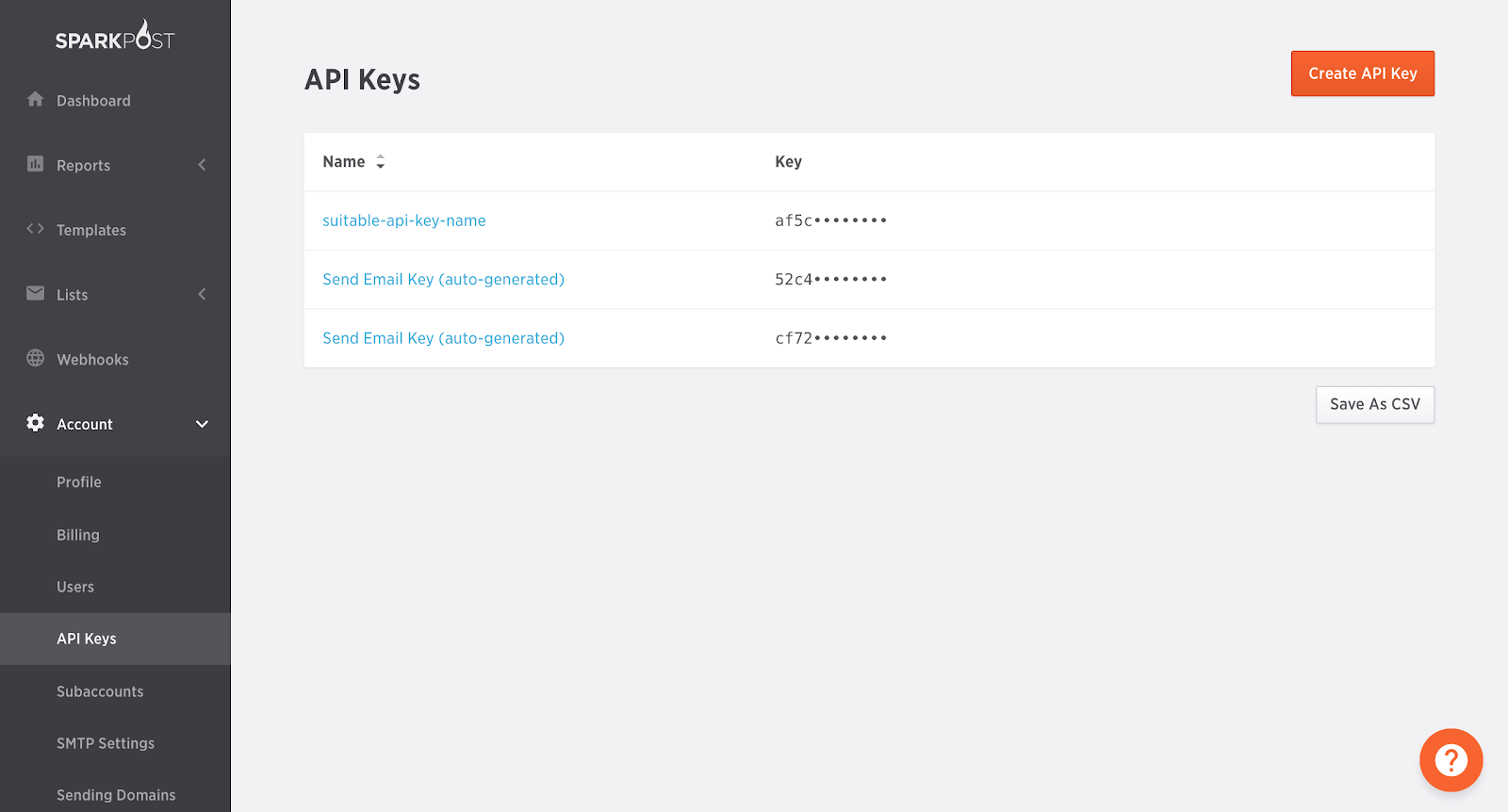
Click to enlarge
Step 2: Add API Name and Select Permissions
Choose an API Key Name and select All against API Permissions. If you prefer granting specific permissions, then please ensure that you check the boxes shown below. Failing to do so can cause integration failure.
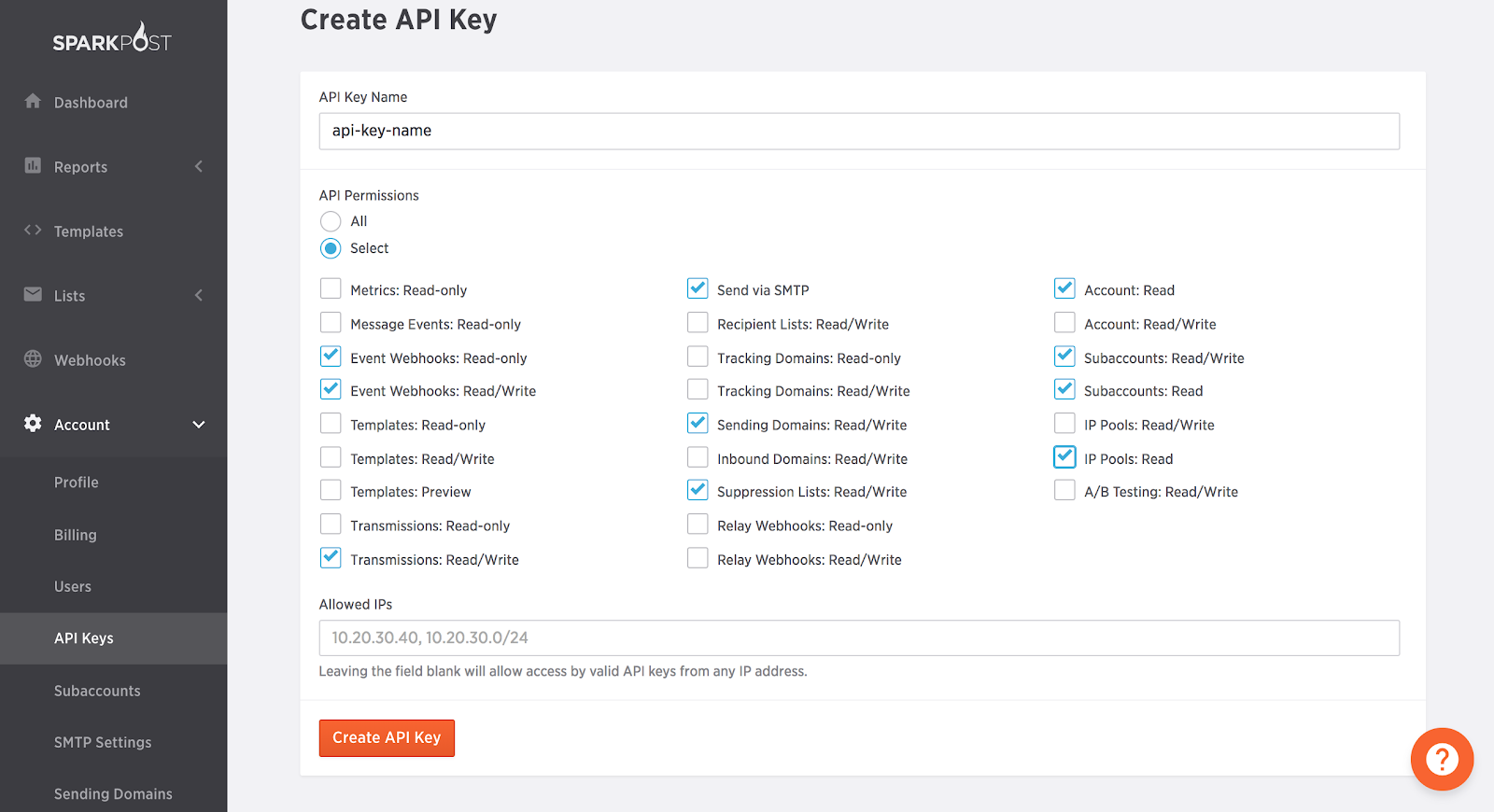
Click to enlarge
Next, click the Create API Key button, and you're good to go!
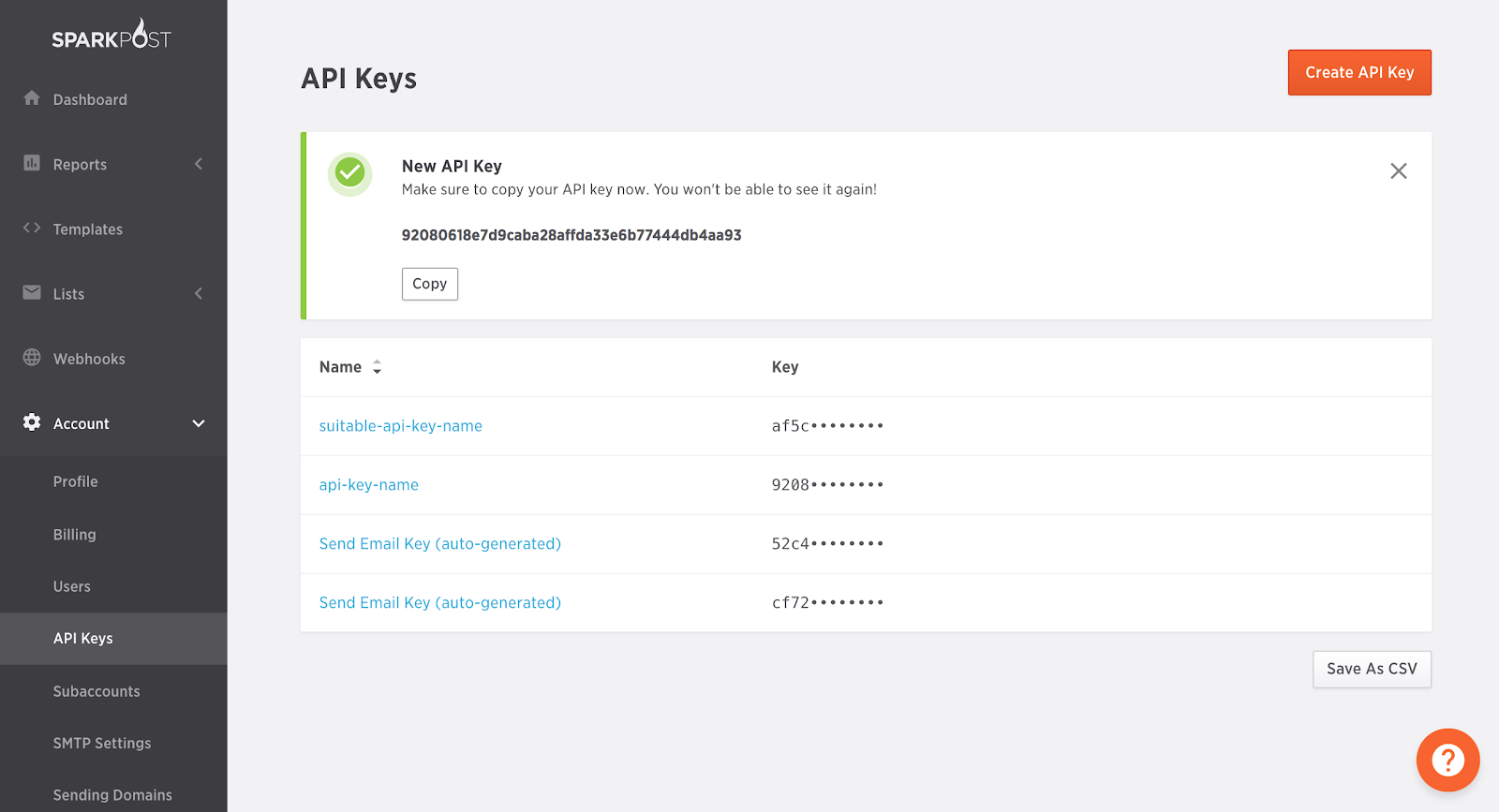
Click to enlarge
3. If You're Using an Existing API Key
Step 1: Navigate to the API Key section in your SparkPost dashboard.
Step 2: Select the API Key you'd like to use for integrating WebEngage and select All against API Permissions.
If you prefer granting specific permissions, then please ensure that you check the boxes shown below. Failing to do so can cause integration failure.
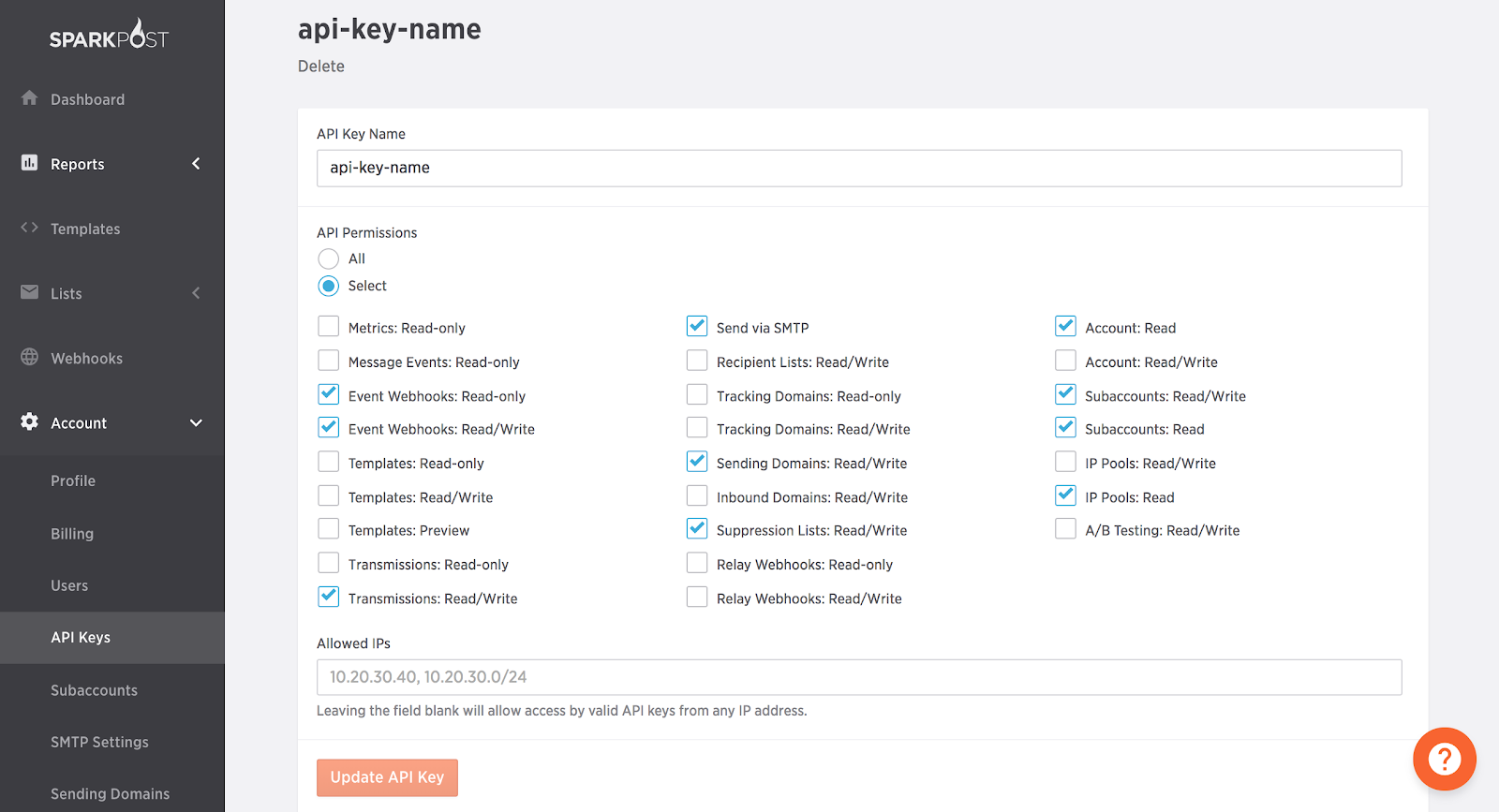
Click to enlarge
Next, click the Update API Key button, and you're good to go!
4. Sending AMP Emails
WebEngage now supports the delivery of AMP Emails in collaboration with SparkPost! However, you will need to implement a few additional settings before you can start engaging your users with highly personalized AMP Emails.
Step 1: Create a Tracking Domain
While email delivery status notifications are automatically tracked for all non-AMP emails in your WebEngage dashboard, you will need to create a custom tracking domain to track user engagement for your AMP Emails. This is a one-time setup and can be configured in your SparkPost dashboard.
Step-by-step Guide to Creating HTTPS Tracking Domain for AMP Email Delivery Tracking via SparkPost
Step 2: Add WebEngage's Custom Cname in SparkPost Dashboard
Once you've created the custom tracking domain for your brand, you will need to add a Cname entry for sparkpost.webengage.com in your SparkPost dashboard to ensure that all the components of your AMP Email are rendered successfully for your users.
Now, let's show you how you can configure SparkPost as an ESP in your WebEngage dashboard.
Configuration
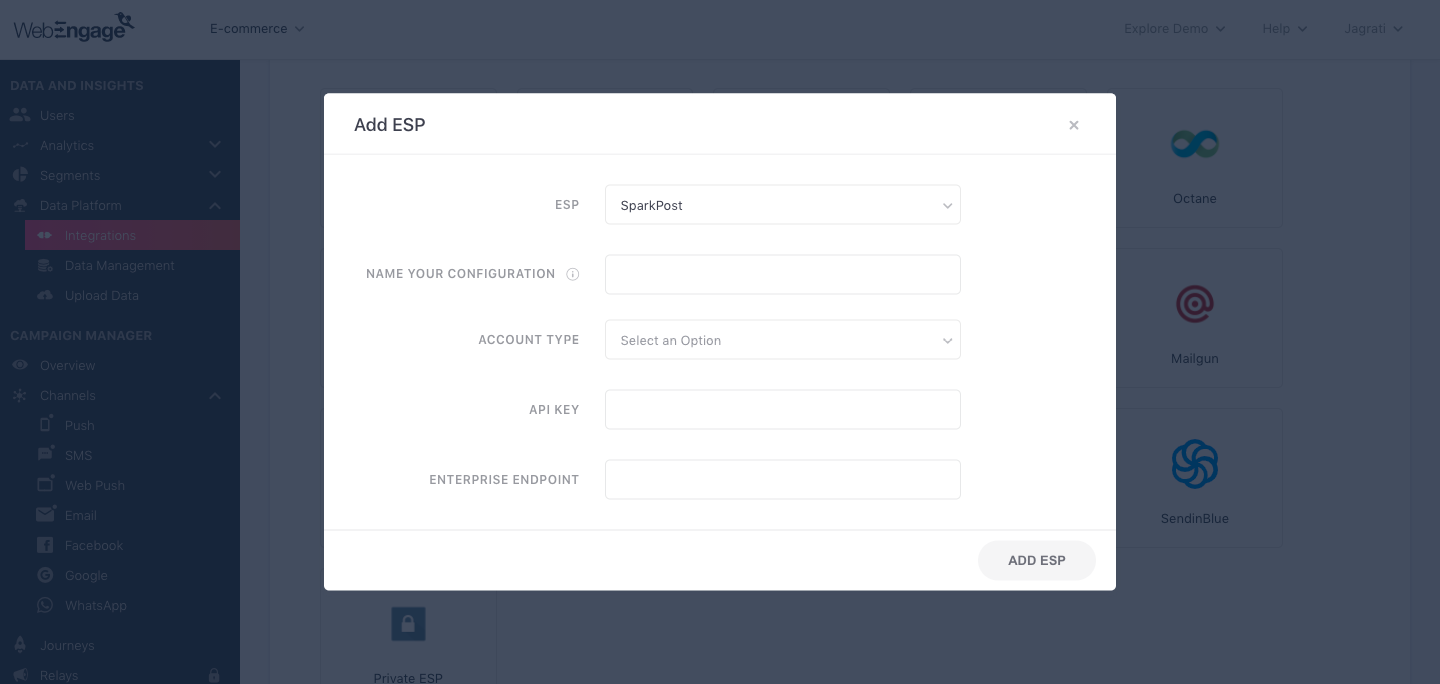
Click to enlarge
As shown above:
Step 1: Select ESP
Select SparkPost from the List of Available ESPs. In doing so, you will be prompted by a configuration modal.
Step 2: Name your Configuration
Please add a user-friendly name that enables you to identify the right ESP for a campaign while creating it. This comes in handy especially when you have multiple accounts with the same ESP for sending different types of campaigns (Transactional/ Promotional).
For example, if you have configured a SparkPost account for sending transactional campaigns, then you can name the configuration:
- SparkPost T
- SparkPost Transactional
Step 3: Select Account Type
Please select the same account type from the dropdown that was chosen while setting up your SparkPost account. A mismatch between the two may cause integration failure.
Step 4: Add API Key
Navigate to your SparkPost dashboard to find and copy your API Key, paste it in the configuration modal.
###Step 5: Add Enterprise Endpoint
If you've selected Enterprise as the Account Type at Step 3, then add your SparkPost enterprise API endpoint here.
Step 6: Add ESP
Click Add ESP, and you're good to go!
Congratulations!You've now successfully integrated SparkPost with your WebEngage dashboard.
You can test the integration by creating a test Email campaign and sending it to a group of internal users (aka your teammates).
Please feel free to drop in a few lines at [email protected] in case you have any further queries or feedback. We're always just an email away!
Updated about 2 months ago